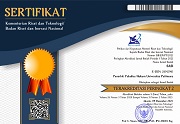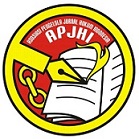EKSISTENSI HAK ULAYAT DI INDONESIA
 )
)
(1) Fakultas Hukum Universitas Pattimura, Indonesia
 Corresponding Author
Corresponding Author
Abstract
Communal Land Rights is the right of the highest land tenure of indigenous people. Indigenous groups is a unity that has a specific area, have a legal entity, has the authority and has its own wealth. rights applicable exit and into the Communal Land. into force because the only alliance in the sense that all citizens can reap the rewards of the land and all plants and animals that hidupdalam fellowship area. The right of association was substantially restrict freedom of the citizen as an individual effort, for the sake of fellowship. Valid exit, because instead of the customary law community, in principle, not allowed to participate received his/ working the land which is the fellowship area concerned. Only with the permission of the fellowship as well as pay compensation outsiders can get a chance to participate and use communal land. Along with the development of life, then the use of communal land is not only used to meet together, but also members of the public are allowed to use some lands to be used to meet their individual needs. Individual mastery of this process continues for generations and is
recognized by the indigenous people.
Keywords
DOI
10.47268/sasi.v16i3.786
Published
2010-09-30
How To Cite
@article{SASI786,
author = {Rosalina Rosalina},
title = {EKSISTENSI HAK ULAYAT DI INDONESIA},
journal = {SASI},
volume = {16},
number = {3},
year = {2010},
keywords = {existence; customary rights},
abstract = {Communal Land Rights is the right of the highest land tenure of indigenous people. Indigenous groups is a unity that has a specific area, have a legal entity, has the authority and has its own wealth. rights applicable exit and into the Communal Land. into force because the only alliance in the sense that all citizens can reap the rewards of the land and all plants and animals that hidupdalam fellowship area. The right of association was substantially restrict freedom of the citizen as an individual effort, for the sake of fellowship. Valid exit, because instead of the customary law community, in principle, not allowed to participate received his/ working the land which is the fellowship area concerned. Only with the permission of the fellowship as well as pay compensation outsiders can get a chance to participate and use communal land. Along with the development of life, then the use of communal land is not only used to meet together, but also members of the public are allowed to use some lands to be used to meet their individual needs. Individual mastery of this process continues for generations and isrecognized by the indigenous people.},
issn = {2614-2961}, pages = {44--51} doi = {10.47268/sasi.v16i3.786},
url = {https://fhukum.unpatti.ac.id/jurnal/sasi/article/view/786}
}
Arizona Yance, 2008, mengintip Hak Ulayat Dalam Konstitusi Indonesia.
B.F. Sihombing, 2005, Evolusi Kebijakan Pertanahan Dalam Hukum Tanah Indonesia, PT. Gunung Agung, Jakarta.
Bushar Muhammad, 2002, Pokok-pokok Hukum Adat, Pradnya Paramita, Jakarta.
Harsono Boedi, 1999, Hukum Agraria Indonesia, Sejarah Pembentukan Undang-undang Pokok Agraria, Isi dan Pelaksanaannya, Djambatan, Jakarta.
Rustandi Ardiwilaga, 1962, Hukum Agraria Indonesia, Masa Baru, Jakarta.
Salle Aminuddin, 2007, Hukum Pengadaan Tanah Untuk Kepentingan Umum, Kreasi Total Media, Yogyakarta.
Sumardjono Maria S W, Harmonisasi Kedudukan Hak Ulayat Dalam Peraturan Perundang-undangan di Indonesia.
Anonim, www.pengacaraonline.com, Hak Ulayat Dalam Hukum Agraria Indonesia.
Patittingi Farida, www.asdarfh .wordpress. com, Hak Ulayat Masyarakat Hukum Adat.
| Dublin Core | PKP Metadata Items | Metadata for this Document | |
| 1. | Title | Title of document | EKSISTENSI HAK ULAYAT DI INDONESIA |
| 2. | Creator | Author's name, affiliation, country | Rosalina Rosalina; Fakultas Hukum Universitas Pattimura; Indonesia |
| 3. | Subject | Discipline(s) | |
| 3. | Subject | Keyword(s) | existence; customary rights |
| 4. | Description | Abstract | Communal Land Rights is the right of the highest land tenure of indigenous people. Indigenous groups is a unity that has a specific area, have a legal entity, has the authority and has its own wealth. rights applicable exit and into the Communal Land. into force because the only alliance in the sense that all citizens can reap the rewards of the land and all plants and animals that hidupdalam fellowship area. The right of association was substantially restrict freedom of the citizen as an individual effort, for the sake of fellowship. Valid exit, because instead of the customary law community, in principle, not allowed to participate received his/ working the land which is the fellowship area concerned. Only with the permission of the fellowship as well as pay compensation outsiders can get a chance to participate and use communal land. Along with the development of life, then the use of communal land is not only used to meet together, but also members of the public are allowed to use some lands to be used to meet their individual needs. Individual mastery of this process continues for generations and isrecognized by the indigenous people. |
| 5. | Publisher | Organizing agency, location | Faculty of Law, Universitas Pattimura |
| 6. | Contributor | Sponsor(s) | |
| 7. | Date | (YYYY-MM-DD) | 2010-09-30 |
| 8. | Type | Status & genre | Peer-reviewed Article |
| 8. | Type | Type | |
| 9. | Format | File format | |
| 10. | Identifier | Uniform Resource Identifier | https://fhukum.unpatti.ac.id/jurnal/sasi/article/view/786 |
| 10. | Identifier | Digital Object Identifier | 10.47268/sasi.v16i3.786 |
| 11. | Source | Title; vol., no. (year) | SASI; Vol 16, No 3 (2010): Volume 16 Nomor 3, Juli - September 2010 |
| 12. | Language | English=en | en |
| 13. | Relation | Supp. Files | |
| 14. | Coverage | Geo-spatial location, chronological period, research sample (gender, age, etc.) | |
| 15. | Rights | Copyright and permissions | Copyright: Authors who publish their manuscripts in this Journal agree to the following conditions: 1. The copyright in each article belongs to the author, as well as the right to patent. 2. Authors can enter into separate, additional contractual arrangements for the non-exclusive distribution of the journal's published version of the work (e.g., post it to an institutional repository or publish it in a book), with an acknowledgment of its initial publication in this journal. 3. Authors are permitted and encouraged to post their work online (e.g., in institutional repositories or on their website) before and during the submission process, as it can lead to productive exchanges, as well as earlier and greater citation of published work. 4. Authors have the right to self-archiving of the article (Author Self-Archiving Policy)
License: The SASI Journal is disseminated based on the Creative Commons Attribution-NonCommercial 4.0 International license terms. This license allows anyone to copy and redistribute this material in any form or format, compose, modify, and make derivatives of this material for any purpose. You cannot use this material for commercial purposes. You must specify an appropriate name, include a link to the license, and certify that any changes have been made. You can do this in a way that is appropriate but does not imply that the licensor supports you or your use.
|
Copyright (c) 2010 Rosalina Rosalina

This work is licensed under a Creative Commons Attribution-NonCommercial 4.0 International License.

 : 6171 times
: 6171 times Download : 2470 times
Download : 2470 times
















